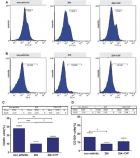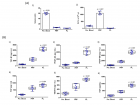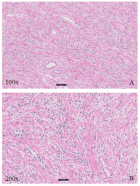Abstract
Case Report
Psychological distress in a social media content moderator: A case report
Yassine Otheman* and Roukaya Benjelloun
Published: 12 October, 2020 | Volume 4 - Issue 1 | Pages: 073-075
The expansion of social media platforms has given birth to a specific professional category in charge of « sanitizing » social media and keeping it free of “inappropriate” content. These content moderators, as a result of being constantly exposed to potentially traumatic images, may be at risk of developing stress-related symptoms. Here we present the case of a social media content moderator who experienced intrusive images, anxiety symptoms and insomnia.
Literature about this subject is very scarce, while the need is increasing to assess this phenomenon and set up strategies of monitoring, counseling and treating this category of workers.
Key points
The expansion of social media platforms has given birth to a specific professional category: content moderators.
As a result of being constantly exposed to potentially traumatic images, content moderators may be at risk of developing stress-related symptoms.
The need is increasing to assess this phenomenon and set up strategies of monitoring, counseling and treating this category of workers.
Read Full Article HTML DOI: 10.29328/journal.apmh.1001024 Cite this Article Read Full Article PDF
Keywords:
Social media; Content moderator; Distress; Insomnia
References
- https://www.statista.com/statistics/278414/number-of-worldwide-social-network-users
- Lewis SP, Heath NL, St Denis JM, et al. The scope of nonsuicidal self-injury on YouTube. Pediatrics. 2011; 127: e552–557. PubMed: https://pubmed.ncbi.nlm.nih.gov/21339269/
- Temporini H. Child pornography and the internet. Psychiatr Clin North Am. 2012; 35: 821-835. PubMed: https://pubmed.ncbi.nlm.nih.gov/23107565/
- Moreno MA, Ton A, Selkie E, Evans Y. Secret Society 123: Understanding the Language of Self-Harm on Instagram. J Adolesc Health. 2016; 58: 78-84. PubMed: https://pubmed.ncbi.nlm.nih.gov/26707231/
- Fineberg NA, Demetrovics Z, Stein DJ, Ioannidis K, Potenza MN, et al. Manifesto for a European research network into Problematic Usage of the Internet. Eur Neuropsychopharmacol. 2018; 28: 1232-1246. PubMed: https://pubmed.ncbi.nlm.nih.gov/30509450/
- Gillespie T. Custodians of the Internet. Amsterdam University Press. 2018.
- Idås T, Backholm K, Korhonen J. Trauma in the newsroom: social support, post-traumatic stress and post-traumatic growth among journalists working with terror. Eur J Psychotraumatol. 2019; 10: 1620085. PubMed: https://pubmed.ncbi.nlm.nih.gov/31231480/
- Bourke ML, Craun SW. Secondary traumatic stress among Internet Crimes Against Children task force personnel: impact, risk factors, and coping strategies. Sex Abuse. 2014; 26: 586-609. PubMed: https://pubmed.ncbi.nlm.nih.gov/24259539/
- Adams RE, Boscarino JA, Figley CR. Compassion fatigue and psychological distress among social workers: a validation study. Am J Orthopsychiatry. 2006; 76: 103-108. PubMed: https://pubmed.ncbi.nlm.nih.gov/16569133/
- Eiser AR. Postmodern Stress Disorder (PMSD): A Possible New Disorder. Am J Med. 2015; 128: 1178-1181. PubMed: https://pubmed.ncbi.nlm.nih.gov/26031889/
Similar Articles
-
Implications on mental health by the coronavirus disease 2019 (COVID-19) pandemic: The role of general practitionerJose Luis Turabian*. Implications on mental health by the coronavirus disease 2019 (COVID-19) pandemic: The role of general practitioner. . 2020 doi: 10.29328/journal.apmh.1001016; 4: 035-041
-
Health professional stress during COVID-19 pandemicFatiha Bennaoui*,Nadia Ei Idrissi Slitine,Fadl Mrabih Rabou Maoulainine. Health professional stress during COVID-19 pandemic. . 2020 doi: 10.29328/journal.apmh.1001023; 4: 070-072
-
Psychological distress in a social media content moderator: A case reportYassine Otheman*,Roukaya Benjelloun. Psychological distress in a social media content moderator: A case report. . 2020 doi: 10.29328/journal.apmh.1001024; 4: 073-075
-
Fears of health catastrophe as Nepal reports increasing deaths from COVID-19Hom Nath Chalise*. Fears of health catastrophe as Nepal reports increasing deaths from COVID-19. . 2021 doi: 10.29328/journal.apmh.1001027; 5: 001-003
-
Being a parent of a child with cancer: What psychosocial and family repercussionsM Zouine*,M Elbaz,J Elhoudzi. Being a parent of a child with cancer: What psychosocial and family repercussions. . 2022 doi: 10.29328/journal.apmh.1001041; 6: 032-035
Recently Viewed
-
Agriculture High-Quality Development and NutritionZhongsheng Guo*. Agriculture High-Quality Development and Nutrition. Arch Food Nutr Sci. 2024: doi: 10.29328/journal.afns.1001060; 8: 038-040
-
A Low-cost High-throughput Targeted Sequencing for the Accurate Detection of Respiratory Tract PathogenChangyan Ju, Chengbosen Zhou, Zhezhi Deng, Jingwei Gao, Weizhao Jiang, Hanbing Zeng, Haiwei Huang, Yongxiang Duan, David X Deng*. A Low-cost High-throughput Targeted Sequencing for the Accurate Detection of Respiratory Tract Pathogen. Int J Clin Virol. 2024: doi: 10.29328/journal.ijcv.1001056; 8: 001-007
-
A Comparative Study of Metoprolol and Amlodipine on Mortality, Disability and Complication in Acute StrokeJayantee Kalita*,Dhiraj Kumar,Nagendra B Gutti,Sandeep K Gupta,Anadi Mishra,Vivek Singh. A Comparative Study of Metoprolol and Amlodipine on Mortality, Disability and Complication in Acute Stroke. J Neurosci Neurol Disord. 2025: doi: 10.29328/journal.jnnd.1001108; 9: 039-045
-
Development of qualitative GC MS method for simultaneous identification of PM-CCM a modified illicit drugs preparation and its modern-day application in drug-facilitated crimesBhagat Singh*,Satish R Nailkar,Chetansen A Bhadkambekar,Suneel Prajapati,Sukhminder Kaur. Development of qualitative GC MS method for simultaneous identification of PM-CCM a modified illicit drugs preparation and its modern-day application in drug-facilitated crimes. J Forensic Sci Res. 2023: doi: 10.29328/journal.jfsr.1001043; 7: 004-010
-
A Gateway to Metal Resistance: Bacterial Response to Heavy Metal Toxicity in the Biological EnvironmentLoai Aljerf*,Nuha AlMasri. A Gateway to Metal Resistance: Bacterial Response to Heavy Metal Toxicity in the Biological Environment. Ann Adv Chem. 2018: doi: 10.29328/journal.aac.1001012; 2: 032-044
Most Viewed
-
Evaluation of Biostimulants Based on Recovered Protein Hydrolysates from Animal By-products as Plant Growth EnhancersH Pérez-Aguilar*, M Lacruz-Asaro, F Arán-Ais. Evaluation of Biostimulants Based on Recovered Protein Hydrolysates from Animal By-products as Plant Growth Enhancers. J Plant Sci Phytopathol. 2023 doi: 10.29328/journal.jpsp.1001104; 7: 042-047
-
Sinonasal Myxoma Extending into the Orbit in a 4-Year Old: A Case PresentationJulian A Purrinos*, Ramzi Younis. Sinonasal Myxoma Extending into the Orbit in a 4-Year Old: A Case Presentation. Arch Case Rep. 2024 doi: 10.29328/journal.acr.1001099; 8: 075-077
-
Feasibility study of magnetic sensing for detecting single-neuron action potentialsDenis Tonini,Kai Wu,Renata Saha,Jian-Ping Wang*. Feasibility study of magnetic sensing for detecting single-neuron action potentials. Ann Biomed Sci Eng. 2022 doi: 10.29328/journal.abse.1001018; 6: 019-029
-
Pediatric Dysgerminoma: Unveiling a Rare Ovarian TumorFaten Limaiem*, Khalil Saffar, Ahmed Halouani. Pediatric Dysgerminoma: Unveiling a Rare Ovarian Tumor. Arch Case Rep. 2024 doi: 10.29328/journal.acr.1001087; 8: 010-013
-
Physical activity can change the physiological and psychological circumstances during COVID-19 pandemic: A narrative reviewKhashayar Maroufi*. Physical activity can change the physiological and psychological circumstances during COVID-19 pandemic: A narrative review. J Sports Med Ther. 2021 doi: 10.29328/journal.jsmt.1001051; 6: 001-007

HSPI: We're glad you're here. Please click "create a new Query" if you are a new visitor to our website and need further information from us.
If you are already a member of our network and need to keep track of any developments regarding a question you have already submitted, click "take me to my Query."















































































































































